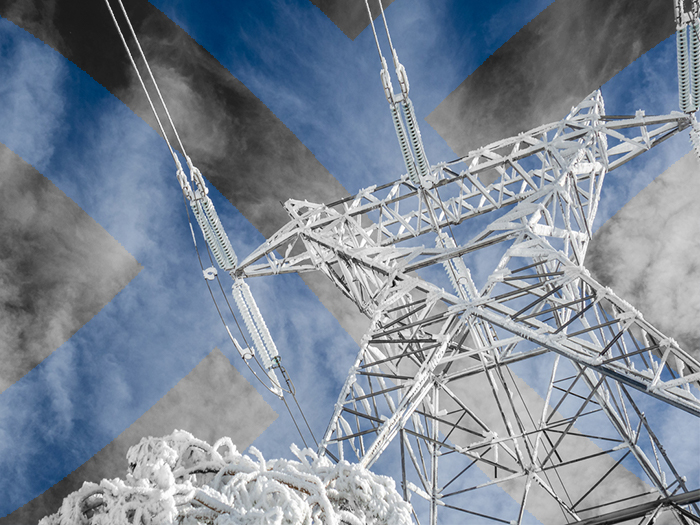News
better business decisions
Posted 4 years ago | 5 minute read

Eirgrid warns of “challenging” winter
Ireland could see electricity shortages over the next five winters because of rising demand and the closure of older power plants, Eirgrid and SONI have warned.
The All-Island Generation Capacity Statement (GSC), published on 29 September, noted that low power plant availability for this year continues to be a concern with an expectation that the coming winter period will be challenging if no action is taken.
According to the report for winter 2021-22, under the median demand, low availability scenario and including unavailability of two large units for the current calendar year 2021, a deficit of 280MW has been estimated. EirGrid will provide further information on Ireland’s security of supply status through the Winter Outlook report.
Minister for Environment, Eamon Ryan, said that the government cannot be “absolutely certain” that blackouts won’t occur. But he expressed confidence that efforts to bring additional power into Ireland’s electricity system will be successful. “It is tight and you can’t be absolutely certain but we expect to be able to manage it,” he told RTÉ’s Morning Ireland programme. Ryan also suggested that the option of keeping Moneypoint coal-burning plant, which is due to close in the coming years, could remain open.
EirGrid and SONI further identified potential capacity shortfalls of 260MW for the year 2022-23, rising to 1050MW in 2023-24 and 1850MW in 2024-25. In the absence of any action, this clearly poses a significant risk to Ireland’s security of electricity supply.
In a statement accompanying its report, Eirgrid warned that “system alerts” are expected to be a feature of Ireland’s power system over the coming winters. Despite a short-term reduction in electricity use due to Covid-19, demand in Ireland is on the rise and will increase significantly. This is due to an increase in the number of large energy users – including data centres, which are forecasted to account for 27% of Ireland’s electricity consumption by 2030.
It is also expected that demand for electricity will increase over the coming years as consumers find new ways to use electricity. These include the use of alternative heating methods, such as electric heat pumps, and cleaner modes of transport, such as electric vehicles. Eirgrid predicts most of the demand to be met from wind and solar energy as the power system is reshaped to meet the Government target of at least 70% of electricity demand coming from renewable sources by 2030.
Over the course of the next 5 years, around 1650MW of generation will retire in Ireland, with up to a further 500-600 MW retiring in Northern Ireland. In addition, the capacity auction for the period 1 October 2024 to 30 September 2025 was held at the end of January 2021. However, the recent withdrawal of previously procured capacity and the failure of the recent auction to clear sufficient capacity mean there is a significant capacity shortfall against security standards for Ireland. At a high level the market did not respond as required leaving a deficiency of 1500 MW to operate a secure system. Capacity shortages are expected in Ireland for the next five winters.
The same day the Commission for Regulation of Utilities (CRU) published an information note on Security of Electricity Supply – Programme of Actions.
It noted that growing electricity demand and declining availability of existing generators led to a recommendation from Eirgrid earlier this year that temporary, emergency, back-up generation would be required. However, Eirgrid since advised that the delivery of such generation is not feasible in the required timeframe, even on a fast-tracked basis. As the Huntstown 2 and Whitegate plants return to service, margins on the electricity system will improve for the peak winter period and return around 800MW of gas-fired capacity to the system.
The core of this programme of actions is the delivery of at least 2000MW of enduring capacity in the form of flexible gas-fired generators. Key measures included:
- Delivery of T-3 (24/25) and T-4 (25/26) and subsequent capacity auctions (at least 2000MW) – it noted that market and policy signals are in place to encourage investment and that it has issued a Direction to the electricity network operators to prioritise the granting of connection offers for generators, reducing timeline-related risks to developer projects.
- Temporary emergency generation capacity (up to 300MW) – CRU confirmed that additional temporary emergency generation capacity totalling up to 300MW is to be procured for delivery for Winter 2022-2023 and to remain available in place for the required number of years thereafter.
- Extended operation of Older Generators (up to 1200MW) – this will include the retention of this generation capacity will be delivered through the all island energy, capacity and system services markets. Alongside this, further work will be undertaken to ensure better availability of the existing generation fleet.
- Demand side mitigation measures – CRU will work to enhance the responsiveness of existing demand side units, as well as developing additional capacity. This will include further work on options for larger demand sites with existing back-up generation, for them to play a greater role in demand side response, particular in times of scarcity.





